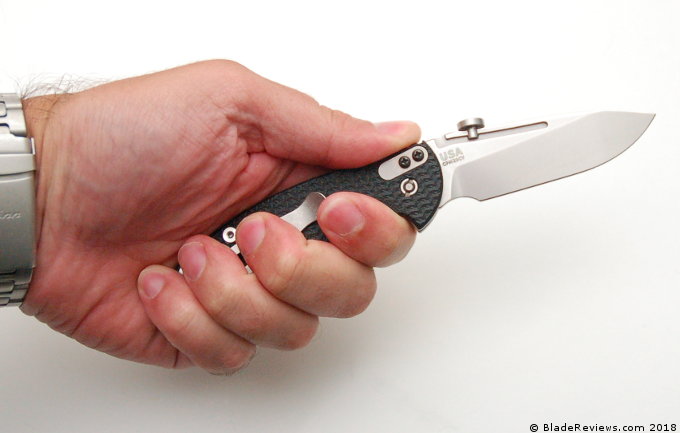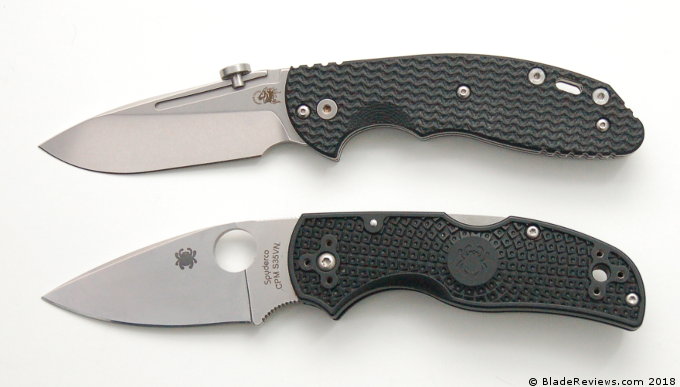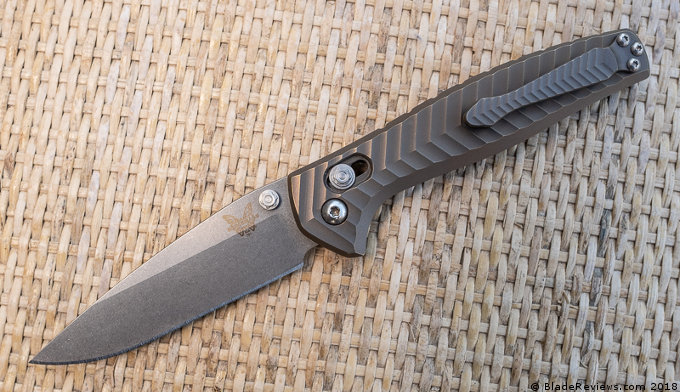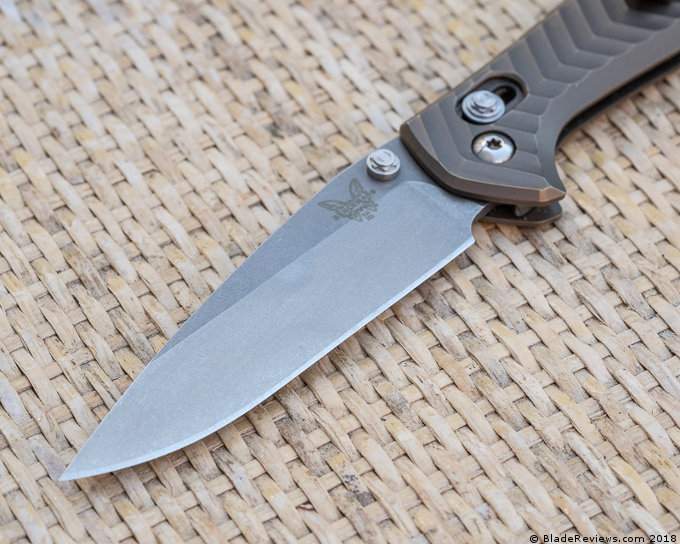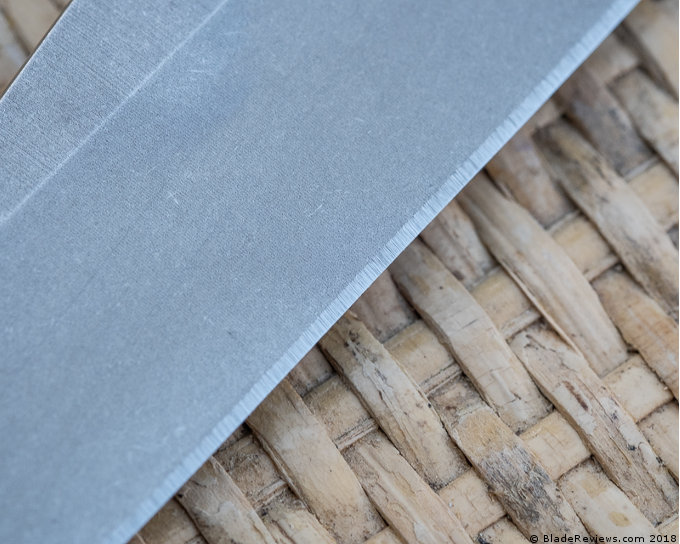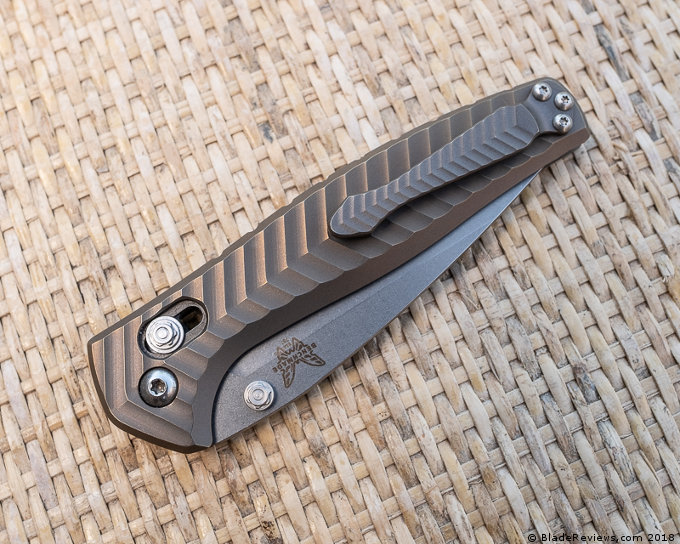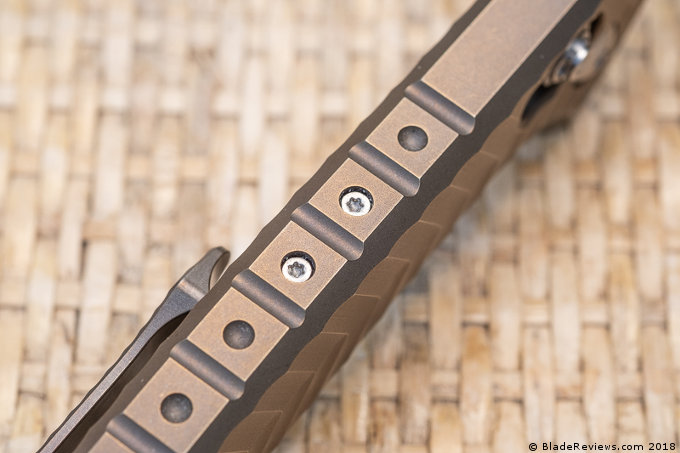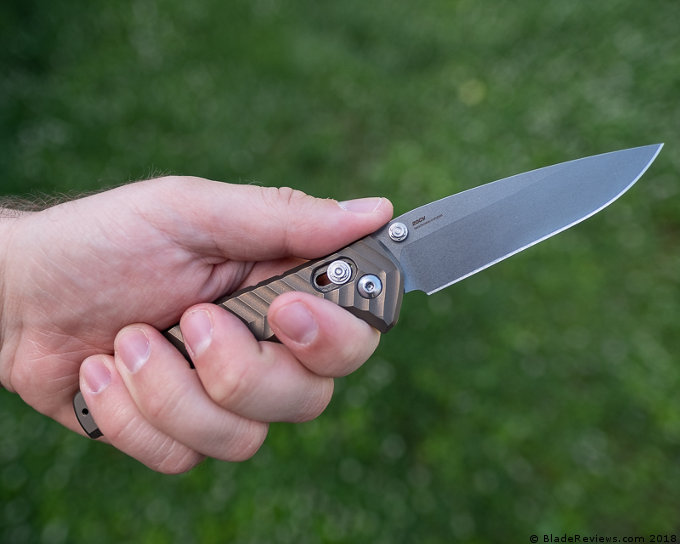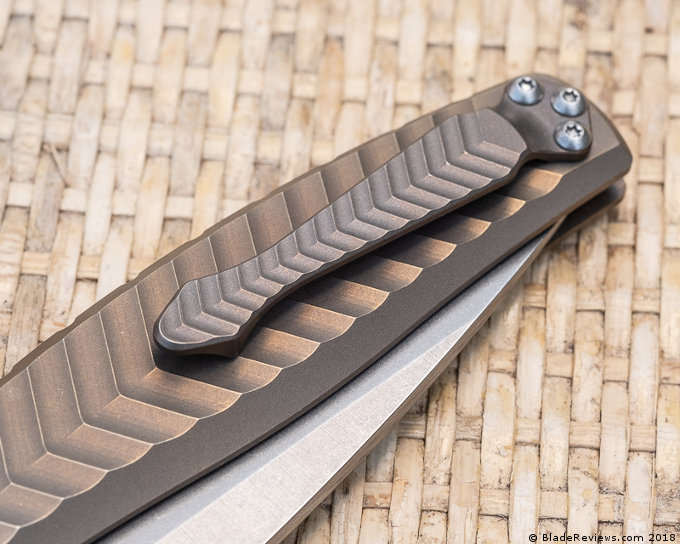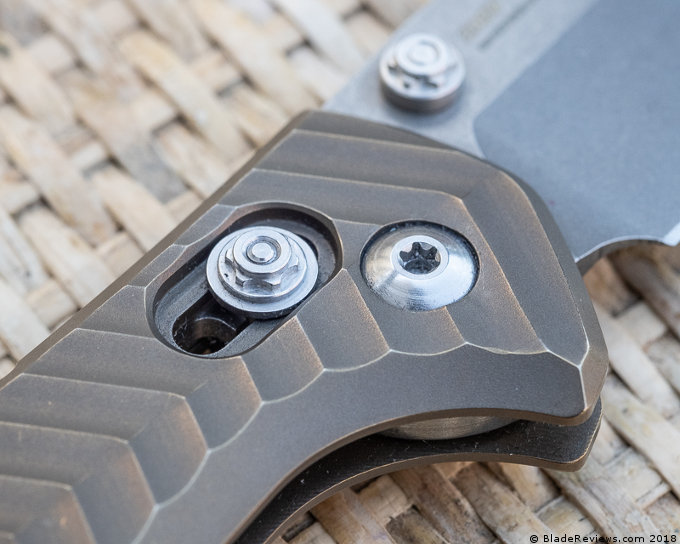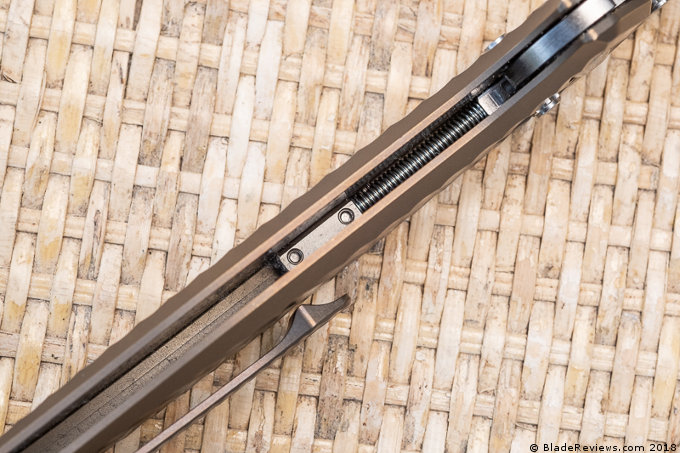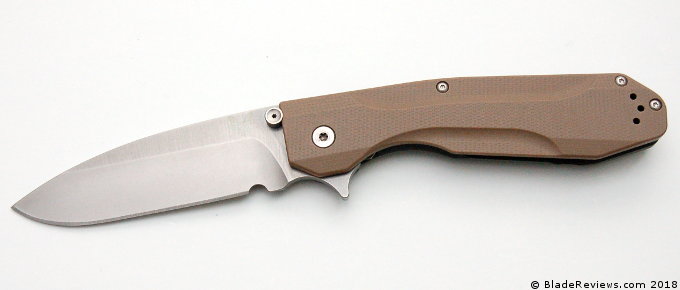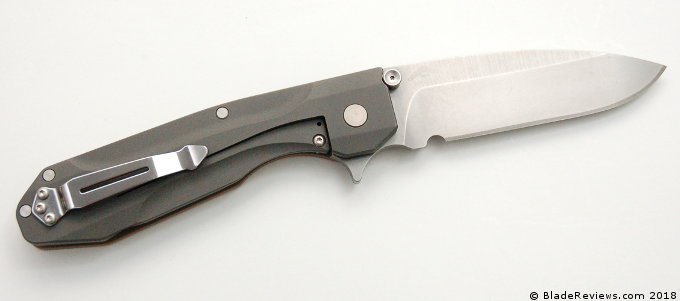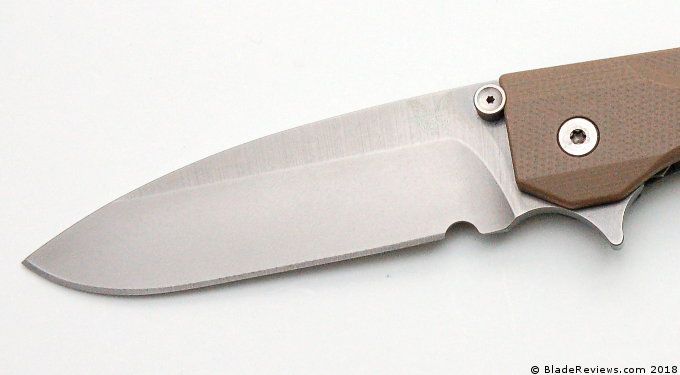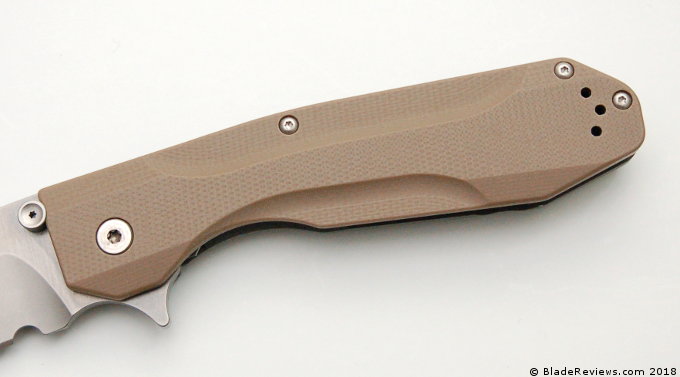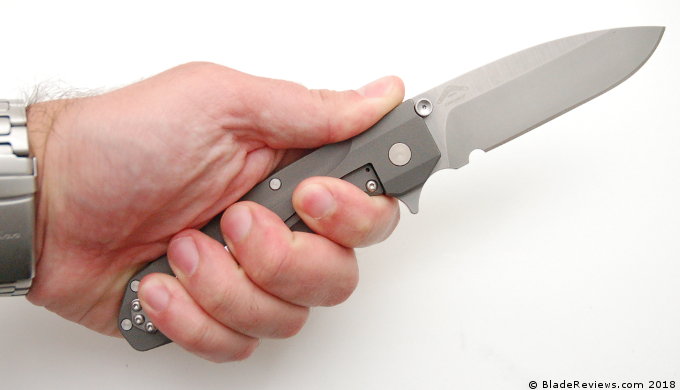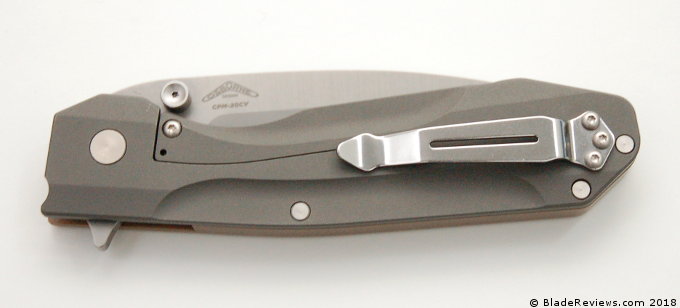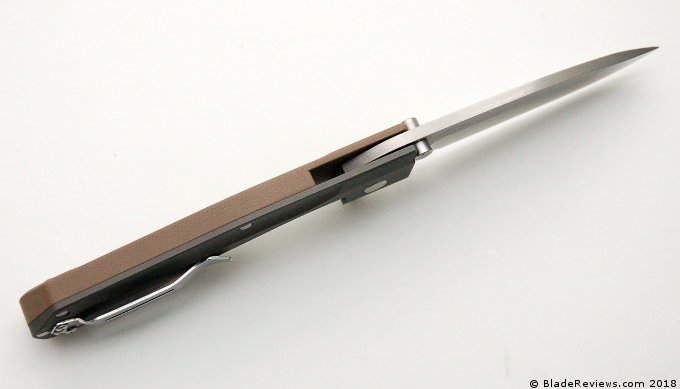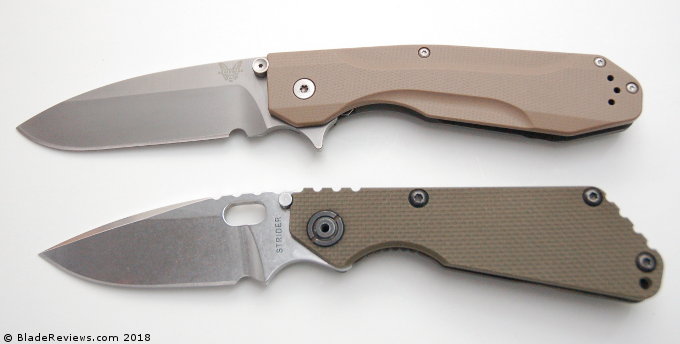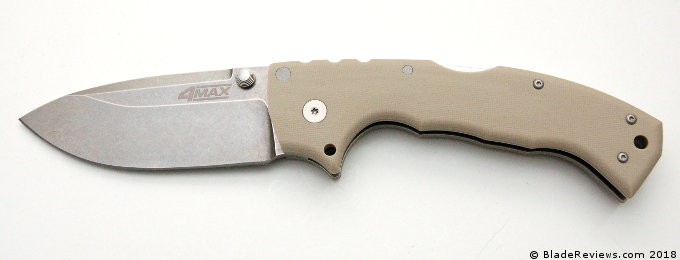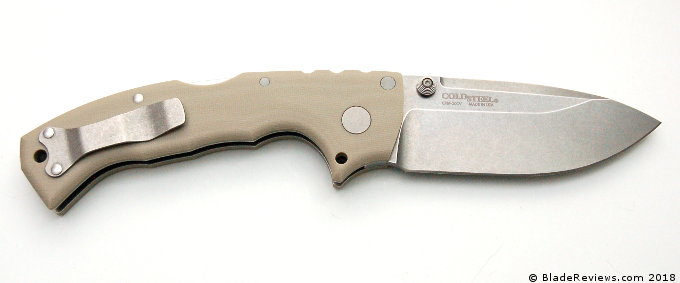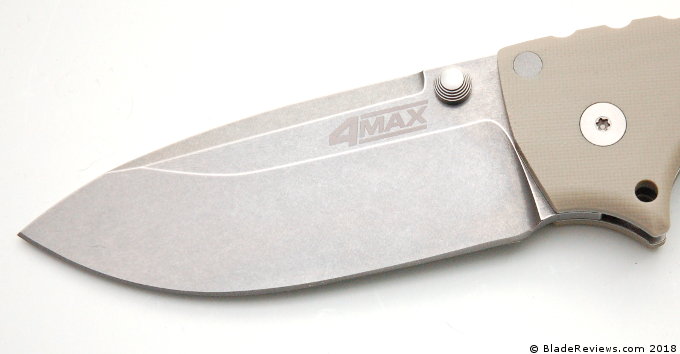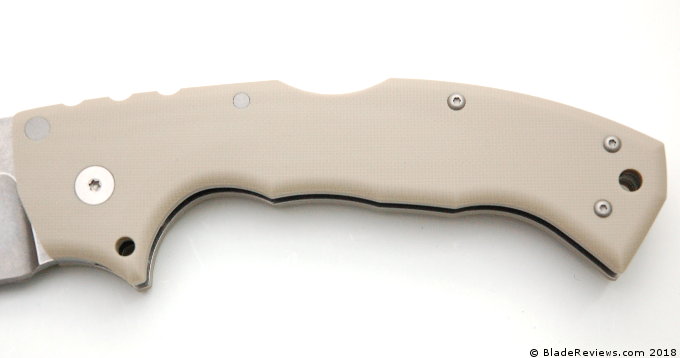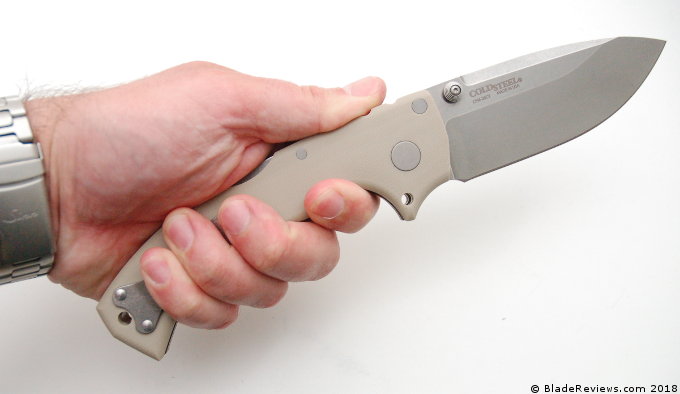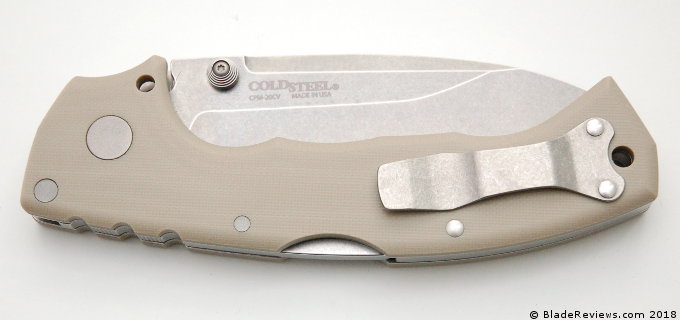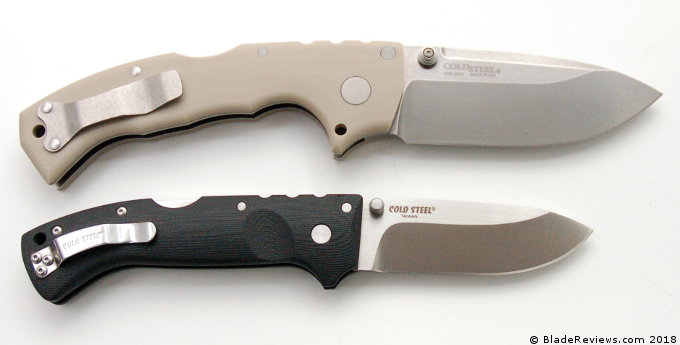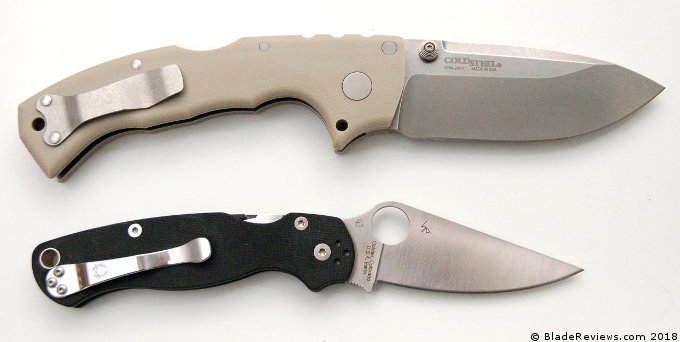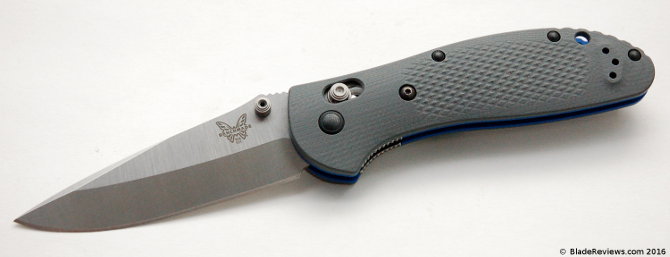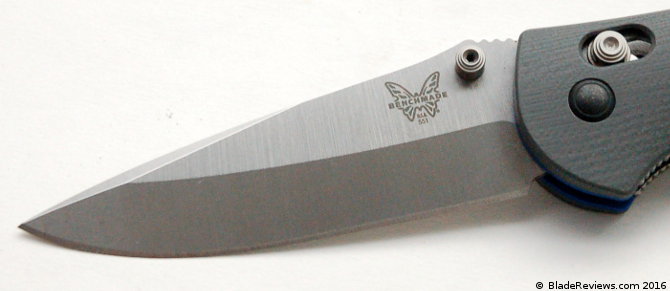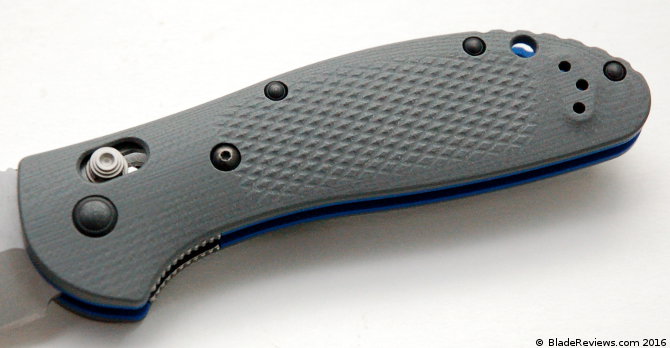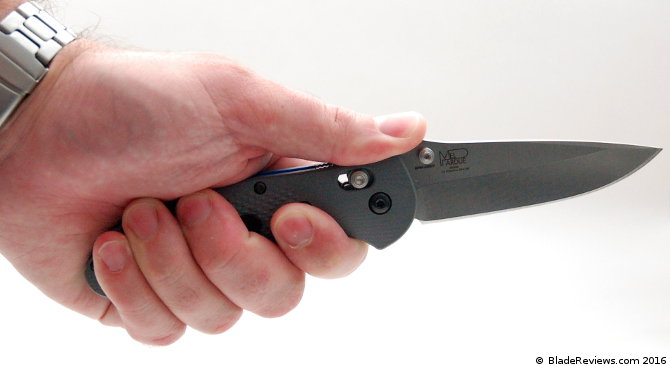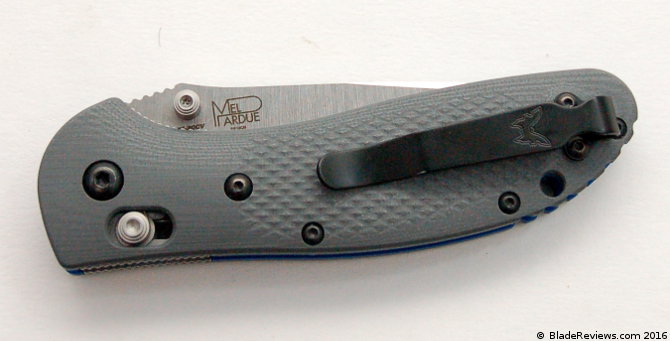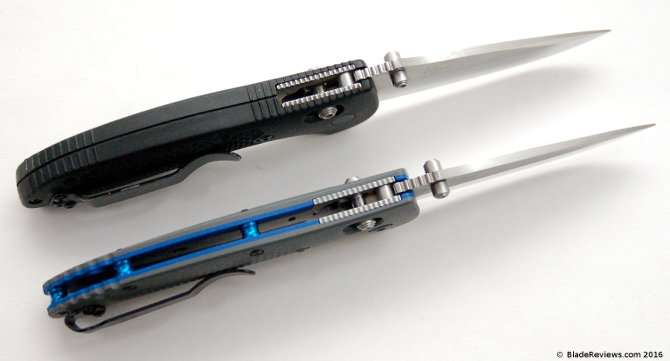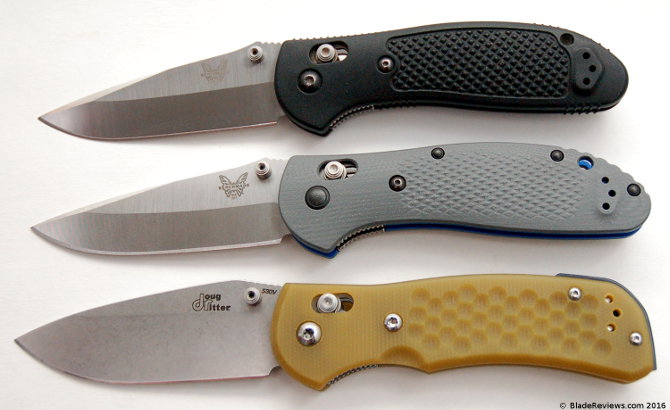Hinderer Knives is a company best known for their overbuilt XM Series. Burly titanium framelock flippers that helped popularize the titanium framelock flipper. So to see them release the XM-18 Slippy, a slip joint using their XM pattern, is a bit of an oddity. But then again, it’s not that surprising given the recent resurgence of interest in slip joint knives.
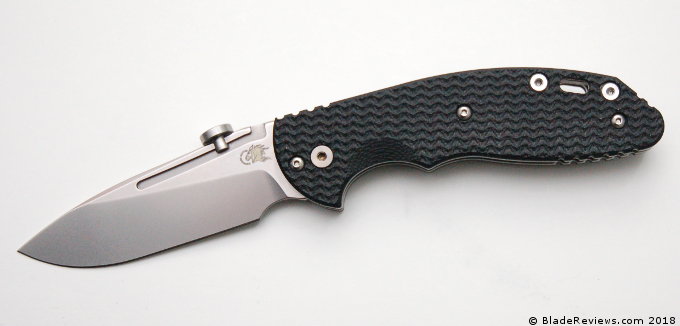
Buy the Hinderer XM-18 Slippy at BladeHQ
And oddly enough this may be their most practical daily carry folder yet. Reasonably small, slim, lightweight, and retailing for under $300, this may be the Hinderer that you didn’t realize you needed.
General Dimensions and Blade Details
The XM Slippy has an overall length of 7″, a 3″ blade, weighs 3.71 ounces, and is made in the USA. It’s a great size for urban or suburban daily carry. It has similar dimension to the XM-18 3″, but is a hair thinner, .4 ounces heavier, and $150 cheaper.
I think if they had to borrow from one of the XM framelocks, the 3″ version was smart. This is all I need for an EDC knife. The 3.5″ version would have been way too much.
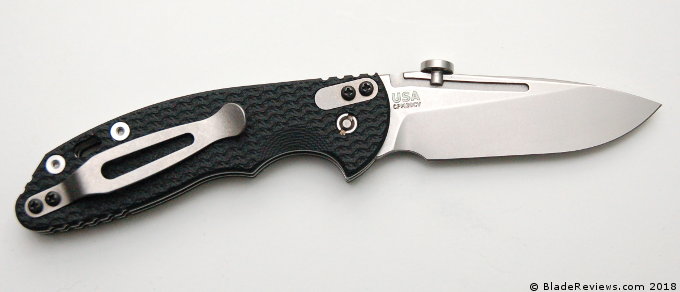
Hinderer has rolled this knife out in a couple of blade shapes, but shown here we have their classic drop point. It’s hard to go wrong with the clean look and practical features of a drop point. A good functional tip, plenty of belly, and Hinderer’s high flat “slicer” grind all work together to provide all-round performance.
Most of these early XM-18 Slippys appear to be coming with CPM-20CV blade steel. We are starting to see more high end knives in CPM-20CV. I’ve reviewed a couple Benchmade knives in this steel, including the G-10 Griptilian. Another notable knife in CPM-20CV is the Cold Steel 4MAX.
So at this point I have a few knives in my long term collection in CPM-20CV and I’ve put some miles on them. CPM-20CV is Crucible’s answer to Boeller M390. It’s the same chemical composition as M390, but it’s made by Crucible in the USA. I think it’s a great steel, and it provides a good blend of edge retention, ease of sharpness, corrosion resistance and toughness. Here is a link to ZKnives’ page on 20CV where you can get some more details.
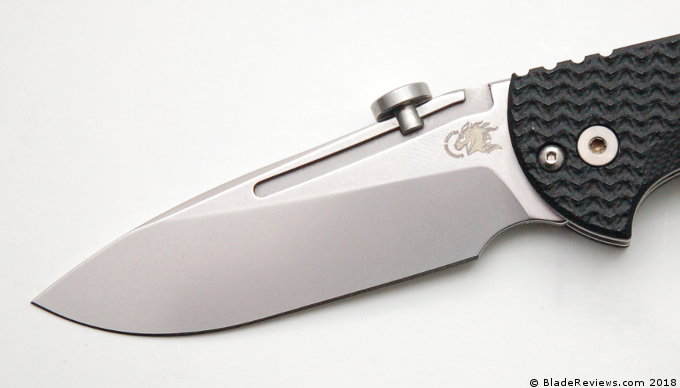
In practice this is a slicey knife that has performed admirably in all the typical EDC chores. I have used my Slippy for your basic EDC knife stuff including opening mail, breaking down boxes, light food prep, and the random jobs that you invariably encounter when carrying a pocket knife. For each task the Slippy worked fine. It slices well and the stonewashed finish hasn’t shown much in the way of wear. Edge retention has been great, and when it’s time to touch it up, all I’ve needed to do is run the edge along the fine stones that came with my Spyderco Sharpmaker. I can’t ask for much more out of a daily carry blade.
Handle, Ergonomics and Pocekt Clip
The handle is textured G10 scales over titanium liners secured with Hinderer’s custom hardware. One complaint is they have a lot of extra bolts on this thing. The show side has the pivot, 2 bolts by the lanyard hole, and then 3 button head bolts running across the handle. These may be necessary for their slip joint mechanism, but it’s not pretty. It would look much cleaner if they could ditch the button heads.
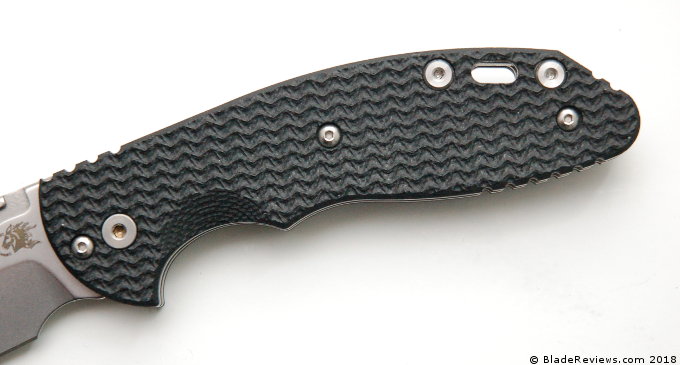
Beyond that, everything has been executed with Hinderer’s typical care and attention to detail. All the pieces have been beautifully finished, the parts line up, and any sharp edges have been broken. Anyone who has handled a regular XM will know what I’m talking about. The fit and finish is top notch.
This is a comfy little knife. The 3″ XM pattern is tried and true, and it’s just the same for this slip joint version. You have a good size handle with plenty of room for a full 4 finger grip. If you want to choke up on the blade you can with the forward choil. There is a run of mild jimping on the spine of the handle right above the pivot, and the textured G-10 scales offer grip without shredding your pocket like a fresh emery board.
The pocket clip is your standard XM-18 spoon style clip positionable for right side tip up or tip down carry. This is a proven clip that does a good job of keeping the knife mostly buried in the pocket. Hinderer includes a filler plate so you fill the void in the G-10 when you reposition the clip.
There isn’t much to complain about when it comes to this pocket clip. Some may favor a deep carry clip, but very little of the handle peeks up out of your pocket anyway. In practice the Slippy carried like a dream. Thin, lightweight, and discreet.
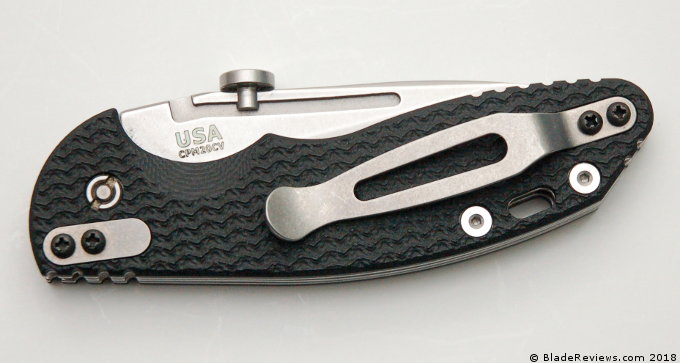
Walk and Talk
For the most part, all the stuff above is essentially a review of the 3″ XM-18 in CPM-20CV steel. Nothing earth shattering in my findings. This section is where it gets interesting. Our titanium framelock has been replaced with a slip joint, and our flipper and thumb studs have been replaced with an adjustable thumb disk.
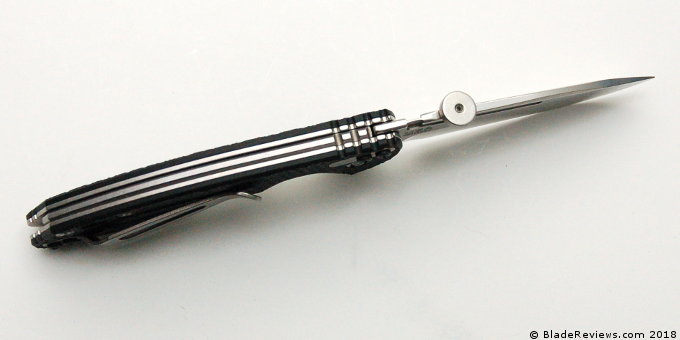
The thumb disk is removable with an allen wrench, so this knife can be made into a 2 hand opener. Good for certain legal jurisdictions. Personally, I left the thumb disk on, but I did adjust it by loosening it with an allen bit from my WiHa bit set, and then sliding the thumb disk down the channel cut into the blade.
I positioned it to a good “sweet spot” where my thumb naturally brushes it when gripping the knife. In practice I think this is a cool feature. The groove in the blade may look a little weird at first, but I quickly got over it, and I like how the thumb disk can be adjusted to fit your hand.
Here is a size comparison with the Slippy next to my Spyderco Native 5:
Lets talk about the walk and talk, since this is a slip joint after all. The backspring on this knife is pretty good. I’d give it a “6” on a 1-10 scale, with 1 being floppy, and a 10 requiring significant force. I’d put most Swiss Army Knives around a 3 or 4. The Slippy has a good amount of resistance, but it won’t rip your fingernails off as you try to open the blade.
The blade opens up with a satisfying snap, and that same strong spring holds the blade open. There isn’t a hard half stop, but there is a “no man’s land” at the 90 degree point. From there you can push the blade closed and the spring takes up the slack to bring the blade home.
Blade centering is perfect on my knife.
Hinderer Knives XM-18 Slippy Review – Final Thoughts
I liked this XM-18 Slippy more than I expected to. What I appreciate is the simplicity. The Slippy has everything you need, and nothing you don’t. I know everyone’s needs are different, but for me 99% of the time I don’t need a locking folder for my daily carry chores. So this slip joint version strikes me as streamlined and practical given what I require out of an EDC knife. For those wanting a more robust locking folder, there is always their regular XM-18 series.
In addition to the practicality of the XM-18 Slippy, I’m also drawn to the price. A sub $300 Hinderer is an accomplishment in my book. The Slippy is a full $150 cheaper than their framelock version. It’s still expensive, but this is a relatively small batch precision product made in the USA. It oozes the kind of quality you would expect from Hinderer. My example is flawless, and at this price I’m a little more inclined to roll the Slippy in my daily rotation carry than keep it as a collectible.
As for potential downsides, I’m not a fan of the extra screws featured on the show side. I haven’t taken this knife apart to see why the bolts are necessary, but probably should. If I do I’ll snap a picture and update the review. Also, some may not be able to get around the thumb disk and channel in the blade. It’s unusual and strikes me as an acquired taste, but I don’t mind it. Like the rest of the knife, it’s practical and it works.
In closing I think Hinderer did a nice job with their take on the slip joint. The slip joint bandwagon has been gaining a lot of steam lately, but Rick and his team have found away to offer a unique take on the slip joint that compliments their existing lineup. Recommended if you are looking for a premium non-locking EDC, are curious about the design, or are a fan of Hinderer knives in general.
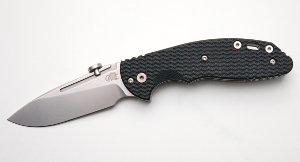
Hinderer Knives XM-18 Slippy
From: BladeHQ
No products found.
I recommend purchasing the Hinderer Knives XM-18 Slippy at BladeHQ, Amazon, or Knife Art. Please consider that purchasing anything through any of the links on this website helps support BladeReviews.com, and keeps the site going. As always, any and all support is greatly appreciated. Thank you very much.
